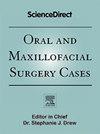Innominate artery injury during percutaneous tracheostomy; a case report and literature review
Q3 Dentistry
引用次数: 0
Abstract
Percutaneous tracheostomy is a common procedure that can be performed bedside by intensivists. The widespread adoption of bronchoscopy and ultrasound have also been utilized in the Intensive Care Unit (ICU), leading to the decline of conventional surgical tracheotomy. Percutaneous tracheotomy is thought to have several advantages over conventional tracheotomy. These include a smaller skin incision, less dissection and tissue trauma, and fewer wound complications. Long term complications have also been reported less frequently. One of the possible complications of performing these procedures is innominate artery injury, considered a rare but lethal injury. Injury to the innominate artery occurs in multiple different manners, including blunt, penetrating, or iatrogenic trauma.
We report a case of percutaneous tracheostomy complicated by injury to the innominate artery, requiring a conversion to an emergent open surgical tracheostomy. This case report illustrates the potentially fatal complication from performing a percutaneous tracheostomy, highlights the causes and management of innominate artery injury, and provides review of the literature this rare and uncommon complication.
经皮气管切开术中无名动脉损伤的研究病例报告及文献复习
经皮气管造口术是一种常见的手术,可以由重症医师在床边进行。在重症监护室(ICU)广泛采用支气管镜检查和超声检查,导致传统手术气管切开术的减少。经皮气管切开术被认为比传统的气管切开术有几个优点。这些包括更小的皮肤切口,更少的剥离和组织创伤,以及更少的伤口并发症。长期并发症的报道也较少。进行这些手术的一个可能的并发症是无名动脉损伤,这被认为是一种罕见但致命的损伤。无名动脉的损伤有多种不同的方式,包括钝性、穿透性或医源性创伤。我们报告一例经皮气管切开术并发无名动脉损伤,需要转换为紧急开放手术气管切开术。本病例报告阐述了经皮气管切开术的潜在致命并发症,强调了无名动脉损伤的原因和处理,并回顾了这一罕见和不常见并发症的文献。
本文章由计算机程序翻译,如有差异,请以英文原文为准。
求助全文
约1分钟内获得全文
求助全文
来源期刊

Oral and Maxillofacial Surgery Cases
Medicine-Otorhinolaryngology
CiteScore
0.60
自引率
0.00%
发文量
43
审稿时长
69 days
期刊介绍:
Oral and Maxillofacial Surgery Cases is a surgical journal dedicated to publishing case reports and case series only which must be original, educational, rare conditions or findings, or clinically interesting to an international audience of surgeons and clinicians. Case series can be prospective or retrospective and examine the outcomes of management or mechanisms in more than one patient. Case reports may include new or modified methodology and treatment, uncommon findings, and mechanisms. All case reports and case series will be peer reviewed for acceptance for publication in the Journal.
 求助内容:
求助内容: 应助结果提醒方式:
应助结果提醒方式:


